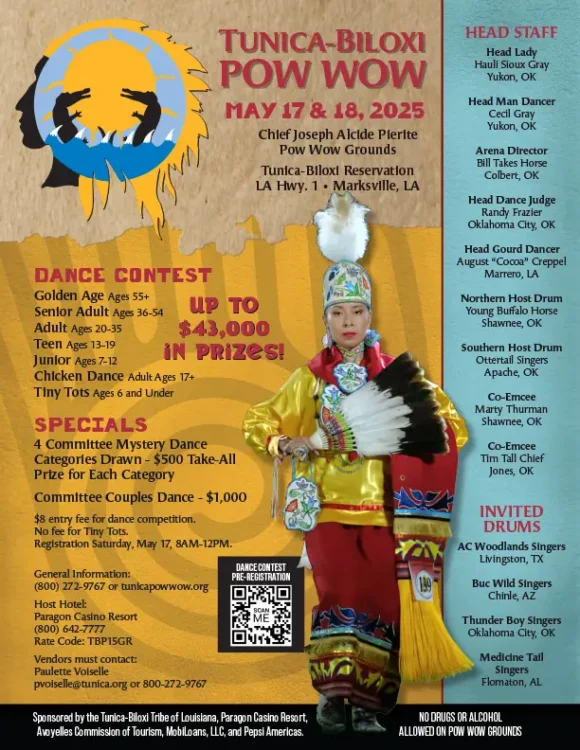Is the Tunica-Biloxi Tribe made up of more than one tribe?
The Tunica-Biloxi Tribe is a successor to the historic Tunica, Biloxi, Ofo and Avoyel tribes. The component tribes were allied in the l8th century and became amalgamated into one in the 19th century through common interests and outside pressures from non-Indian cultures. Although technically the ancestry of citizens is often mixed tribally through intermarriages, tribal citizens identify either as Tunica, Biloxi, or Biloxi-Choctaw.
What is the size and location of the Tunica-Biloxi Reservation?
The Tunica-Biloxi Indian Reservation is located just south of Marksville in east-central Louisiana. A part of the city extends onto reservation land. Tribal lands comprise approximately 1,717 acres of Trust and Fee property in Avoyelles and Rapides Parishes.
Do all Tunica-Biloxi tribal citizens live on the reservation?
There are 1,226 enrolled Tunica-Biloxi tribal citizens interspersed throughout Louisiana, Texas, Illinois, and other parts of the United States. Approximately 42% live either on or in close proximity to the reservation and designated tribal lands located in central Louisiana.
Is the Tunica-Biloxi Tribe recognized by the U. S. government?
The Tunica-Biloxi Tribe is one of four federally recognized Native American tribes in the state of Louisiana. The Tunica-Biloxi gained federal recognition in 1981.
Where can I find information on the annual Pow Wow?
Information on the annual Tunica-Biloxi Pow Wow can be found at www.tunicapowwow.org or by contacting John Barbry at jdbarbry@tunica.org or (318) 240-6412.
What laws govern the Tunica-Biloxi Reservation?
The Tunica-Biloxi Tribe of Louisiana is governed by the laws inscribed in its tribal constitution. The Tunica-Biloxi exercise inherent sovereign powers, as recognized by the U.S. Constitution, U.S. Supreme Court, and Congress, notwithstanding being a “nation-within-a-nation.”
What is the structure of the Tunica-Biloxi government?
The Tunica-Biloxi Tribe is governed by a tribal council made up of a chairman, vice-chairman, secretary-treasurer, and four council citizens elected by tribal citizens. The tribal administrator oversees various departments of tribal government. See a list of departments under the Tribal Department page of this website.
What is the Tunica Treasure?
Housed in the Tunica-Biloxi Museum, the “Tunica Treasure” is a vast collection of Native American European trade items and other artifacts deposited as grave goods by the Tunica from 1731 to 1764. Repatriation of this collection was the result of a landmark state appeals court decision that provided precedent for the Native American Graves Protection and Repatriation Act of 1990.
